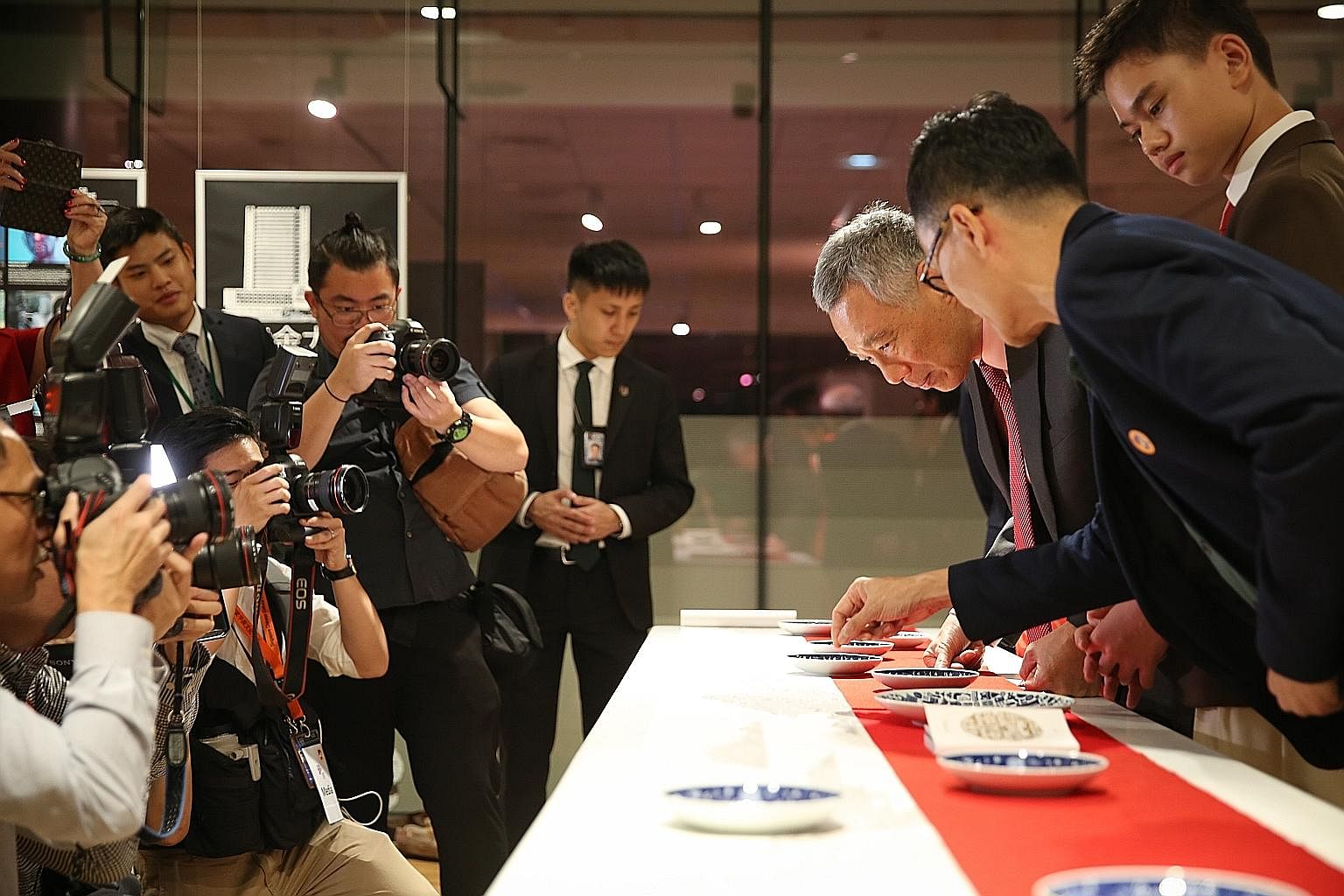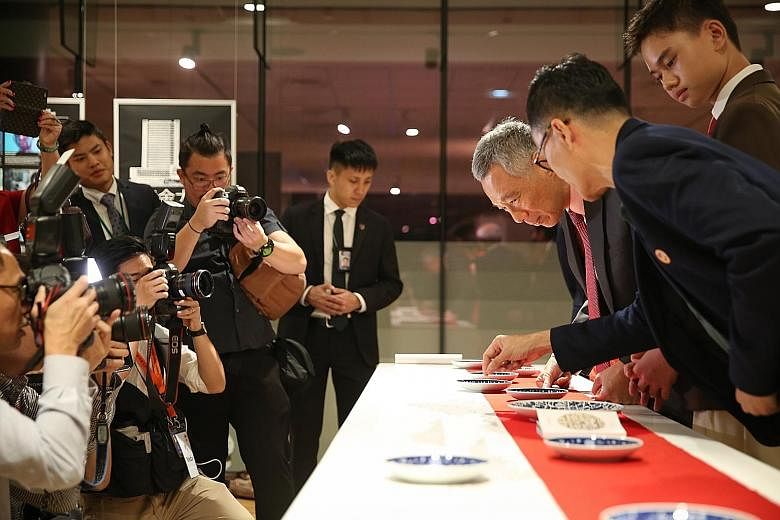A civilisation is defined as much by its arts and culture as it is by its technology, its power or its prosperity. Creating jobs, attracting investments, training and upgrading workers, staying competitive in the world economy - these are all essential. But "man does not live by bread alone".
Human beings need the arts and culture to nourish our souls. We are moved by beauty, we feel empathy and love for others, we yearn to "see a world in a grain of sand, and a heaven in a wild flower", as the English poet William Blake put it.
We certainly do not wish Singapore to be a First-World economy but a third-rate society, with a people who are well off but uncouth. We want to be a society rich in spirit, a gracious society where people are considerate and kind to each other, and as Mencius said, where we treat all elders as we treat our own parents, and other children as our own children. We have made progress in these respects, but we are far from perfect.
From time to time, we still come across Singaporeans who behave deplorably, like recently when a frail old man was shoved around at a hawker centre. But I was relieved that people were outraged by this behaviour. It could have been worse: Singaporeans might have regarded such behaviour as normal. After all, in many countries, if you do not jostle to get to the front of the queue, you will simply be elbowed aside. If you put your tissue paper there to "chope" it, it will just be swept away. It was not too long ago that Singaporeans did the same, as those of you my age may remember. We have come a long way, indeed. Today we are a modern and developed society, but remain rooted in our Asian cultures. This sense of rootedness gives us a sense of identity and confidence.
We are also a multiracial, multi-religious and multi-cultural society. This diversity is a fundamental aspect of our respective identities. Our aim is integration, not assimilation. No race or culture in Singapore is coerced into conforming with other cultures or identities, let alone that of the majority. Ours is not a melting-pot society, with every race shorn of its distinctiveness. Instead, we encourage each race to preserve its unique culture and traditions, while fostering mutual appreciation and respect among all of them. Being Singaporean has never been a matter of subtraction, but of addition; not of becoming less, but more; not of limitation and contraction, but of openness and expansion.
So over time, each race has retained and evolved its own culture and heritage; but each has also allowed itself to be influenced by the customs and traditions of other races. The result has been distinctive Singaporean variants of Chinese, Malay, Indian and Eurasian cultures, and a growing Singaporean identity that we all share, suffusing and linking up our distinct individual identities and ethnic cultures. So much so that when we travel overseas - whether to neighbouring countries like Malaysia and Indonesia, or farther afield like China and India - we can tell if someone is Singaporean just by the way they speak and act.
When we deal with nationals from these countries, we are confident of our own Singaporean cultures and identities, even as we are conscious that we are ethnic Chinese, Malays, Indians or Eurasians. Thus, the Chinese Singaporean is proud of his Chinese culture - but also increasingly conscious that his "Chineseness" is different from the Chineseness of Malaysian and Indonesian Chinese, or the Chineseness of people in China, Hong Kong or Taiwan. Indeed, we now speak of a Singaporean Chinese culture. In the same way, we can speak of a Singaporean Malay culture, and a Singaporean Indian culture. For a country that is just over 50 years old, which is a very short time compared to the ancient civilisations from which we spring, this is quite an achievement.
Cultures reflect and express a people's deep values as well as their collective experiences; individual talent as well as tradition; the old and the new merging to create fresh forms and new recognitions. Therefore, cultures grow, change and evolve naturally and organically; they cannot be planned, directed or ordered into being.

But that does not mean the Government has no role to play. It can encourage gracious behaviour and foster positive social norms. It can recognise cultural achievements and support the arts. For the arts do not always pay for themselves. In our schools, we offer not just maths and science, but also literature, drama and music. We encourage students to participate in co-curricular activities like dance, symphonic orchestra, Chinese orchestra and calligraphy. We support institutions like the Nanyang Academy of Fine Arts, the Lasalle College of the Arts and the Yong Siew Toh Conservatory of Music. We have also created facilities like the National Gallery and the Esplanade, as well as supported the activities of arts and cultural groups.
So when the Chinese community proposed setting up the Singapore Chinese Cultural Centre (SCCC), the Government was happy to support this endeavour. The SCCC now has an 11-storey state-of-the-art building. As you can see, it is a beautiful and handsome building. But what matters are the people who will use these spaces and facilities, and give it life. Those who perform and display their efforts here, as well as those who come to appreciate, enjoy, and encourage Chinese arts and culture.
I hope the SCCC will strengthen the Singapore Chinese arts and cultural scene, make it accessible to all races and appeal to all ages, and ensure that Singaporeans remain rooted in our multi-cultural identity for many years to come.

